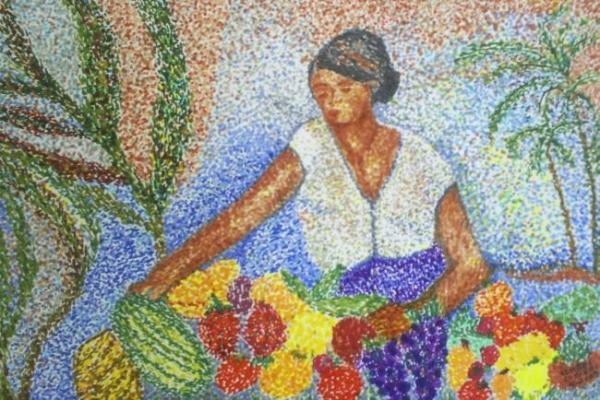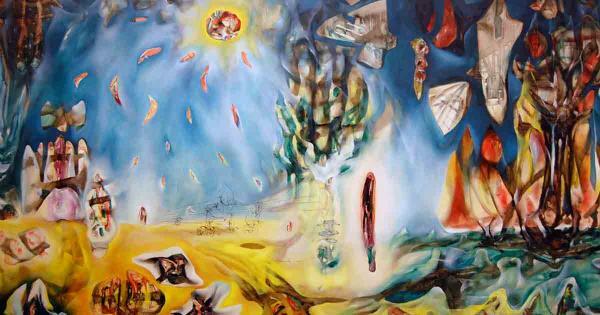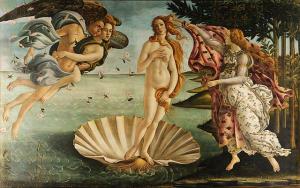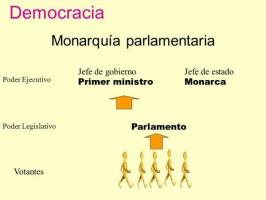5 best avant-garde LATIN AMERICAN PAINTERS

The latin american art of the first decades of the 20th century experienced a big renovation inspired by the European avant-garde, although with a different perspective. Some artists who carried out a rereading of Latin American political and social realities in order to build a cultural identity and artistic styles with their own personality, breaking with the eurocentric academicism.
In this lesson from unPROFESOR.com we review the best Latin American avant-garde painters.
Index
- Characteristics of the Latin American avant-gardes
- Anita Malfatti, one of the avant-garde painters of Latin America
- Roberto Matta, another of the most influential avant-garde painters
- Xul Solar, the most eccentric vanguard
- Fernando Botero, a unique and personal universe
- Diego Rivera, the great muralist of Mexican identity
Characteristics of the Latin American avant-garde.
Before talking about the Latin American avant-garde painters, we are going to know the avant-garde movement
. And it is that the avant-garde or Latin American modernity had different streams depending on the degree of European influence, the indigenous presence and the cultural contribution of populations of African origin.In countries with indigenous influence, the indigenism, an art that tried to recover and vindicate the pre-Columbian cultural roots. A movement that materialized in painting in the so-called mexican muralism, in front of which stood out Diego Rivera and David Alvaro Siqueiroyes
In other countries with less influence of indigenous cultures such as Uruguay or Argentina, this modernization went through seeking inspiration in colonial culture, culminating in the nativism in the figure of the Uruguayan Pedro Figari. In Cuba, for example, resorted to african influence.
Thus, although most of the Latin American artists had been trained in Europe, absorbing the artistic techniques and the ideology innovator of cubism, fauvism or surrealism, among other avant-gardes, tried to adapt them to the cultural idiosyncrasies of each country.
The Latin American avant-gardes start from the 20s of the 20th century, the key events being:
- The "Modern Art Week" of 1922 in Sao Paulo with figures like Anita Malfatti
- The foundation of the magazine “Martín Fierro” in 1924 in Buenos Aires with Emilio Pettoruti and Xul-Solar
- The rise of Constructive Universalism in 1930 from the hand of Joaquín Torres García and the vindication of Americanism

Image: Slideplayer
Anita Malfatti, one of the avant-garde painters of Latin America.
Anita Malfati (1889-1964) is a referent of the brazilian modernism. It is the nickname of Anita Catarina Malfattiga, she was a Brazilian painter, considered the introducer of the European and American avant-gardes in Brazil.
He was one of the big names at the 1922 Modern Art Week with a portrait entitled the russian student (1917). a work of fauve style, very scandalous at the time, he was enthusiastically defended by a group of artists and writers.
Anita trained in Berlin and New York, coming into contact with the expressionism. Upon his return, he developed the techniques learned and promoted Brazilian modernism.

Roberto Matta, another of the most influential avant-garde painters.
Robert Mattea (1911- 2002) was a Chilean architect, painter and poet, being a great rep the surrealismor and one of the last representatives of him.
He also trained in Europe, making contact with André Breton and Salvador Dali. He was the creator of infrarealism, being the use of thick lines and diffuse patterns of light one of its most outstanding characteristics.

Xul Solar, the most eccentric vanguard.
Xul Solar (1887 - 1963) is another of the Latin American avant-garde painters. it was a pArgentine inventor, sculptor, writer, musician, astrologer, esotericist, inventor and linguist. A versatile and eccentric artist who spent a long time in different European countries learning different disciplines.
Thus, Xul became interested in astrology, the occult sciences, expressionism and futurism, among other topics. He was a great friend of Jorge Luis Borges.
Xul Solar was a surrealist and primitivist painter who carried out small and medium-sized works, in tempera, watercolor or oil, in addition to experimenting with unconventional supports such as cardboard, glass or wood. A work full of symbolism and schematics.

Fernando Botero, a unique and personal universe.
Ferdinand Botero (1932-), Colombian painter influenced by the abstract expressionism and pop art, this author created his own style, the Boterism.
A figurative style in which people and animals are obese and curvy. A prolific and highly recognizable author who has a large number of sculptures and works scattered around the world.

Diego Rivera, the great muralist of Mexican identity.
Diego Rivera (1886-1957) is one of the great Mexican painters of the Latin American avant-garde. An artist who, after touring Madrid, Paris and Italy, began his career as a muralist, participating in that search for the Mexican identity together with muralists such as José Clemente Orozco, David Alfaro Siqueiros and Rufino Tamayo.

If you want to read more articles similar to Latin American avant-garde painters, we recommend that you enter our category of History.
Bibliography
- The 1922 Modern Art Week: seven days that shook culture, The UNESCO Courier: an open window on the world, XXXIX, 12, p. 38-39, illus., 1986,
- CARRILLO, Carmen Virginia. Latin American avant-garde manifestos, a space for reflection. New figure, 2000, vol. 11.
- CROSS, Jacqueline. Discourses of modernity in peripheral cultures: the Latin American avant-garde. Hispamerica, 1997, vol. 26, no 76/77, p. 19-34.
- PINI, Yvonne; RAMIREZ NIETO, Jorge. Modernities, vanguards, nationalisms: analysis of controversial writings linked to the Latin American cultural context, 1920-1930. National University of Colombia, 2012.
- SCHWARTZ, Jorge; TWO SAINTS, Estela. Latin American avant-gardes. Mexico: Economic Culture Fund, 2002.



